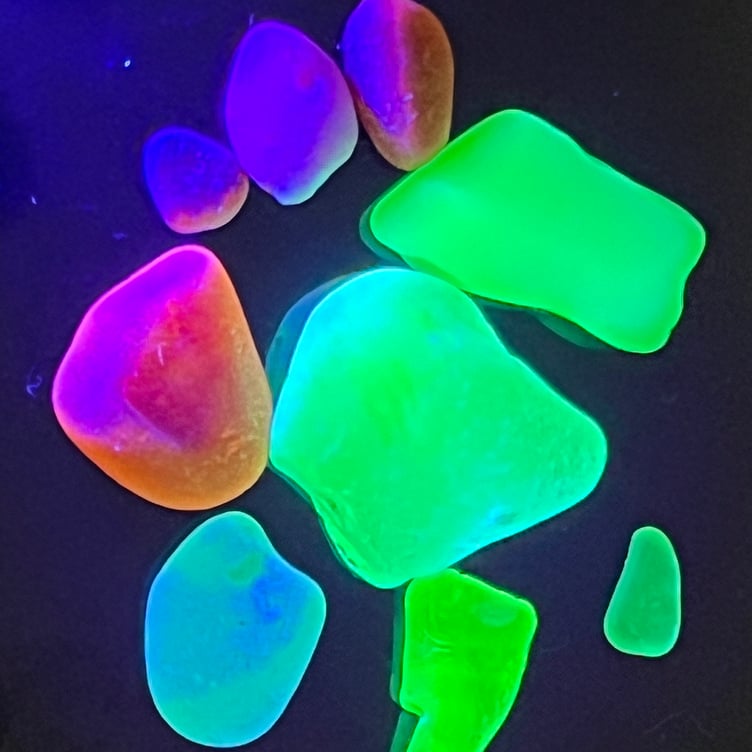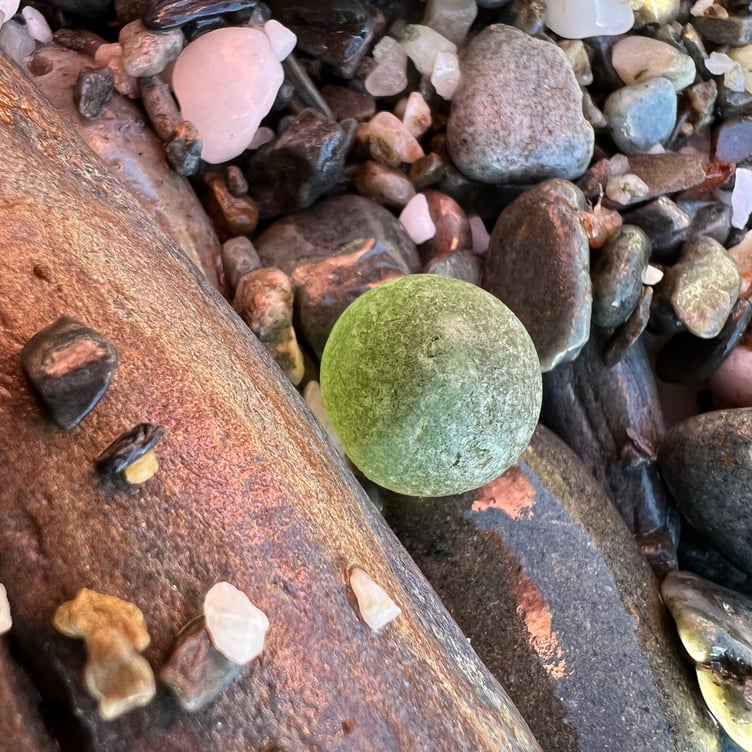There’s hidden treasure just waiting to be discovered on Manx shores.
That treasure is sea glass, the remnants of discarded bottles, their jagged shards polished smooth into glittering jewels by the action of the waves over many years.
The best place in the British Isles - and possibly the world - for collecting sea glass is Seaham on the coast of County Durham, home in Victorian times to a sprawling bottleworks which was once the largest in Europe.
But the Isle of Man is right up there when it comes to the sheer quantity and variety of sea glass that can be found - the result of the fact we are located just 70 miles or so from the once great industrial centres of Britain.
Sea glass collecting, something of a sideshoot from the established hobby of beachcombing, has become a popular pastime in recent years.
It’s a great way to while away an hour on a beach, particularly if you have children, who tend to be particularly adept treasure hunters.

The most common colours found are green and brown, remnants of wine and beer bottles respectively, a light greeny blue known as aqua or sea foam, and clear glass which has been turned white by the action of daylight.
A prize for any collector is to find a bit of blue.
It ranges in colour from cornflower to electric blue and cobalt.
Blue glass tableware was manufactured in Bristol from the 1800s onwards but cobalt blue sea glass will likely originate from Victorian and Edwardian medicine or poison bottles.
The rarest of the colours is orange - not to be confused with the amber hues of some brown sea glass - followed by purple and red.
Shine an ultraviolet torch on red sea glass and it will invariably glow pink and orange, the result of the selenium used in its production. Some deep ruby red glass contains gold - it was made using a chloride of that precious metal.
You can also occasionally find uranium glass, which contains harmless traces of the radioactive element. It looks fairly non-descript until you shine a UV light on it and it then fluoresces to an eerie alien green.

Seaham is famous among sea glass collectors for its ‘multis’, multi-coloured jewels perhaps created by the disposal of waste glass at the end of a day’s production at the bottle works, or the experimentation of a trainee apprentice there.
More likely they originated in a factory in Sunderland, seven miles to the north, that specialised in producing stained glass and multi-coloured art glass.
Multis do occasionally turn up on Manx shores too, but not usually with the same rainbow of hues as those found at Seaham.
To look for sea glass you need to go to a shingle beach, preferably at low tide.
The best places in the island are on the east coast from Ramsey down as far as Port Erin - and in fact there is very little to be found on the west coast at all.
Prime spots are Ramsey Grand Island beach and by the lifeboat station, the north end of the shore at Douglas, Onchan harbour, Castletown, Scarlett and Port St Mary and the Cozy Nook end of Port Erin beach.
If you are lucky, you could find a sea glass marble.
These can be Codd marbles that were widely used until the 1930s to preserve fizzy drinks in bottles, or they are old toy marbles, often misshapen and frosted from years of being tumbled by the tides.

Glass bottle stoppers can also be found.
Treasure hunters can chance across the evocatively named pirate glass - which appears black but shines olive green, amber or blue against a strong light.
This thick black glass was used for liquor bottles, preserving the contents from the action of light and protecting it from breakages in transit.
One of the rarest finds on the beach is not made from glass at all but porcelain - and has a haunting and macabre back-story.
The little figurines, measuring just over 2ins high, are known as a Frozen Charlotte and were produced by the million from the 1850s to the 1920s.
They started out innocently enough as a children’s floating bath toy.
But they went on to take their name and a sinister significance from an American folk song called “Fair Charlotte” and a poem entitled “A Corpse going to a Ball.”
In these cautionary tales a vain young girl disobeys her mother by refusing to wear a cloak over her party dress - and then freezes to death in an open sleigh on the way to a winter ball.
Sold for as little as a penny, the popularity of the little pottery dolls soared in the UK and US where they were baked into cakes as a surprise gift for children.
Some were sold in tiny bathtubs or even coffins, a reflection of the Victorians’ morbid preoccupation with death.
While recent research casts doubt on that link with the macabre, suggesting that the name ‘Frozen Charlotte’ was only adopted in the 1940s by doll collectors, it’s nevertheless the case that finding the ghostly face of Frozen Charlotte staring up at you from a beach is a creepy experience.

After returning home from the beach with a pocket of sea glass, what should you do with it?
Many collectors sort it out into a variety of glass jars, building it up to make a display in its own right.
Others use it to create pieces of art.
Alternatively, you can turn your sea glass into items of jewellery. There are businesses in the Isle of Man that do just that - notably Castletown-based Under the Sea IoM.
Whatever you choose to do with the sea glass you find there’s one thing for certain - collecting it can prove to be quite addictive.





